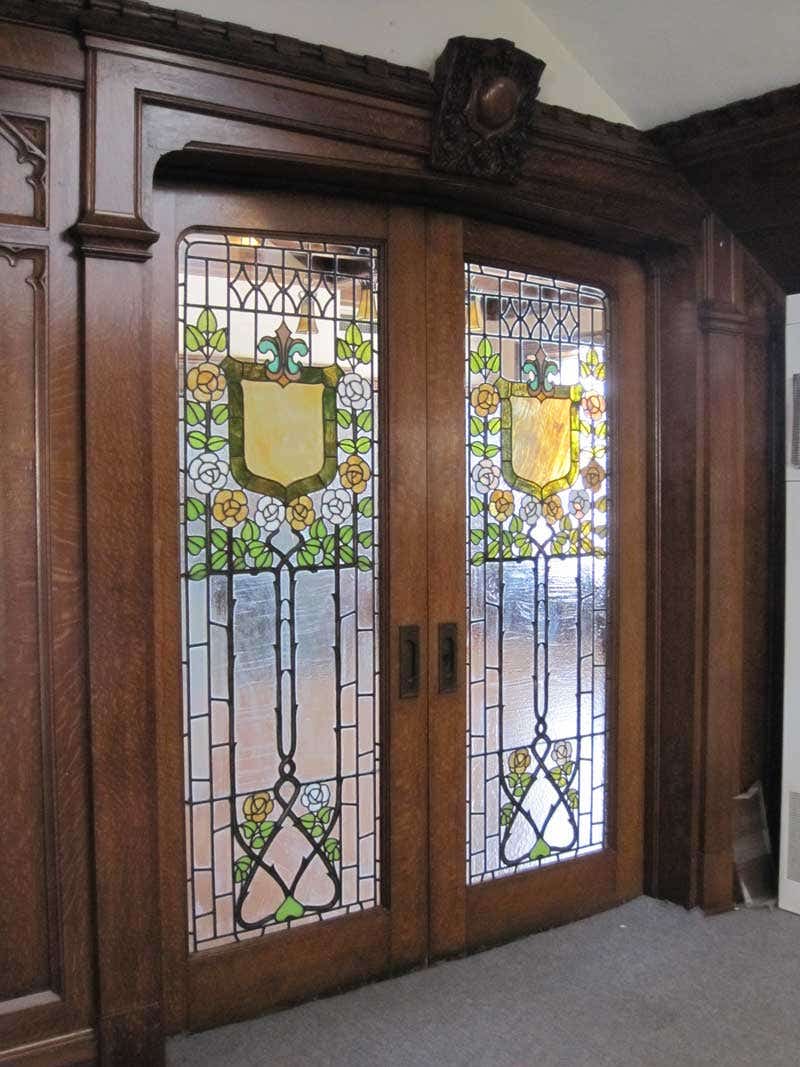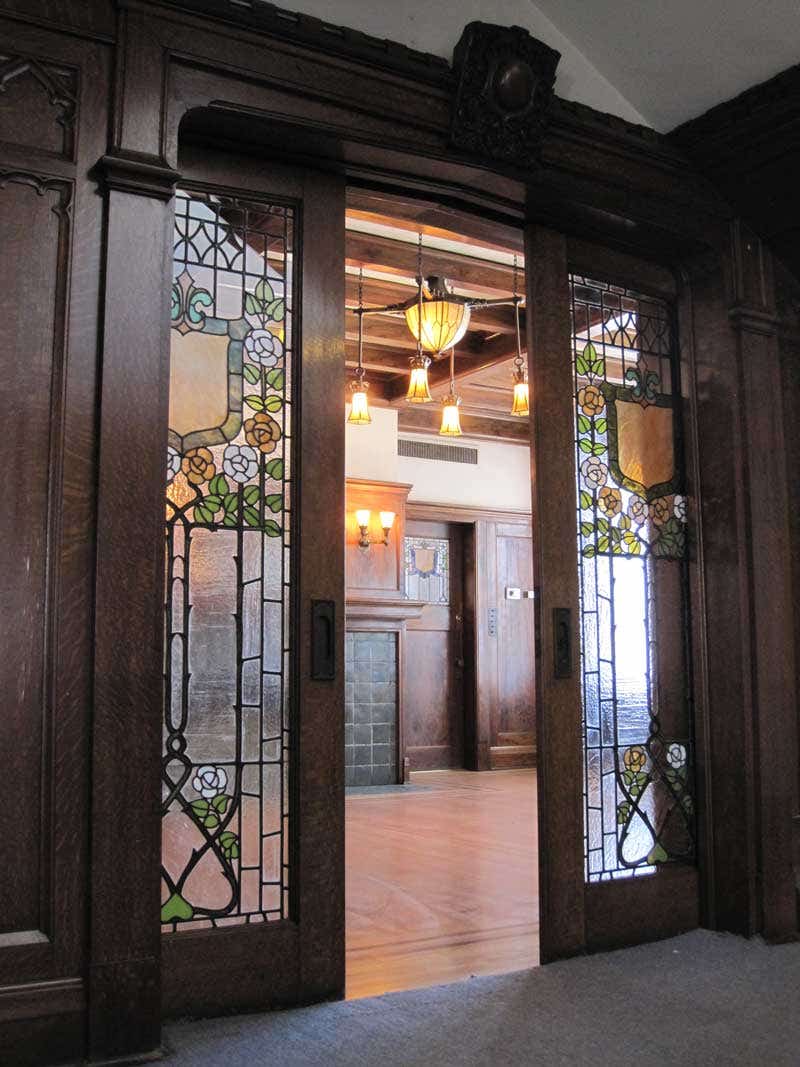Sliding Pocket Doors
Pocket doors can be a style statement—or an efficient use of space.
Sliding silently into and out of the wall, pocket doors may not be as much a style marker as the Arts & Crafts colonnade, but they make elegant and versatile room dividers in the modified open-plan houses of this period. Close them to separate one room from another, or push them into walls to create a larger space. In tight spaces where there isn’t enough room for a standard door swing, a single pocket door is a good solution.
After the house has settled for few decades, pocket doors may stick, scrape, bind, gap, or make unearthly noises when pulled. Most of the time, problems are due to a lack of alignment. Doors may hang at different levels, come off the tracks, or stick in place by debris. They may even be nailed in place.
To troubleshoot problems in existing pocket doors, first determine what kind of door mechanism you have, then follow these tips.
DOOR STUCK IN POCKET
Look for nails through door edges, or a stop piece or furring strip nailed across the door opening. Remove the obstruction and see if this frees the doors. Using a flashlight, check for broken plaster or other debris inside the pocket. If there is debris, lift up on the door, and rock and inch it forward. Have a partner remove the debris using a broom handle or a vacuum cleaner with a crevice tool.
If the door still won’t move properly, it may be misaligned with the top guide inside the pocket. Just as you would with a balky screen on a sliding glass door, wiggle the door to get it back on center. Poke a ruler in alongside to guide the door out.
Using the pull hardware, pull gently, rocking the door. You may need to use force. (If the pull hardware is missing, set two screw eyes about 1' apart on the edge of the door, and thread some heavy wire between the two. Then pull.) As a last resort, go through the plaster and wedge the studs apart to free the door. If the doors are salvageable, try shaving down the studs for the needed clearance. Obviously, this will involve significant plaster repair.
DOORS ARE BALKY, SCRAPE THE FLOOR, OR MAKE NOISE
Many of the clearances around a smoothly operating pocket door are only about 1⁄4". It may be binding on the track above or along the floor. Fortunately, the height of the rollers is adjustable. a Locate the slanted screw mechanism on top of the door just inside the recess area. If the door is scraping against the floor, turn the adjustment screw so it pulls the door upward. Tap some shims under the door to hold it about 1⁄4" off the floor. After you’ve raised the door and removed the shims, make sure the door hangs at least 3⁄16" off the floor.
If the door is too high, adjust the screw to lower it. Be careful not to unscrew it completely, however, or the door will fall off.
If the screw mechanism or rollers are dirty or rusty, clean and oil them to solve the noise problem.
DOORS GAP WHEN CLOSED
As buildings settle, floors have a tendency to bow, which can cause your pocket doors to gap when closed. a Check to see that the roller mechanism is securely fastened to the top of the door, and that the door itself is not warped. Adjusting the roller height may help. a The stop moldings along the side jambs or top track may be loose or warped. Carefully remove them and re-nail them in the correct alignment.
DOORS ROLL PAST THE CENTER POINT
If one or both of your doors rolls past the center point, exposing its rear edge, the stop piece is probably missing. The stop piece is a retractable metal or wood finger on the rear edge of the door, which catches on the jamb when the door rolls out.
If the door rolls too far into its pocket, add a stop block on the back of the door, near the center.
ROLLERS ARE DAMAGED OR MISSING
If the rolling mechanism is too far gone to salvage, you may be to replace the parts (see list below), or have a machine shop fabricate needed parts.
Pocket doors trapped in an Arts & Crafts Tudor were brought back by cabinetmaker Nancy Hiller after the Indiana Landmarks Foundation asked her to do a small restoration job on the 1910 Glossbrenner Mansion in Indianapolis. The leaded and stained glass doors were in near-perfect condition. Veneered in quarter-sawn oak on one side and Circassian walnut on the other, the two massive doors come together at the center of a Tudor-arched opening. They had been partially enclosed and rendered useless since 1949, when the physician–owner, using the house for his medical practice, covered the walnut side with a pair of built-in bookcases.


Happily, the alterations were easily reversed. “After removing the built-in bookcase, we made some minor adjustments to the doors and were stunned by how smoothly they operated after so many years,” says Nancy. Neither the rollers nor hangers needed adjustment. The only alteration required was a new door stop and some paint removal on one side of the leaded glass.
Mary Ellen Polson is a creative content editor and technical writer with over 20 years experience producing heavily illustrated know how and service journalism articles, full-length books, product copy, tips, Q&As, etc., on home renovation, design, and outdoor spaces.








